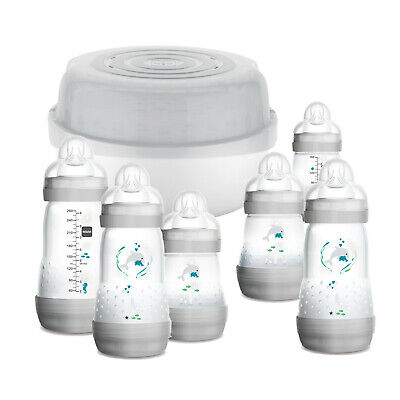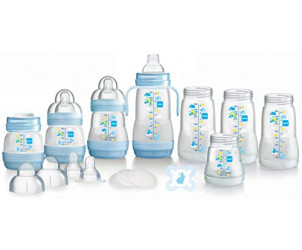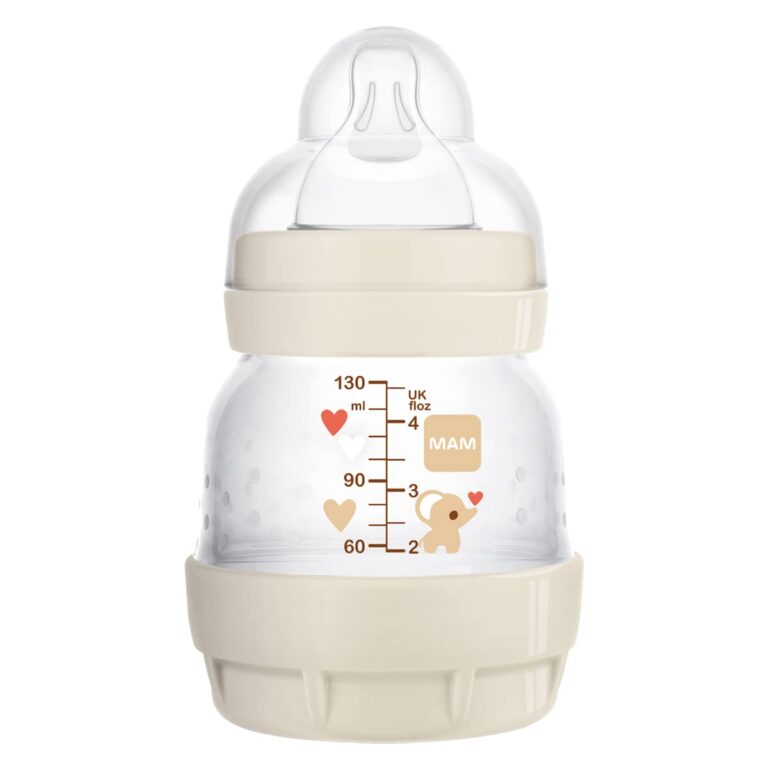Choosing the right nipple size for your baby’s bottle is crucial for their comfort and feeding experience. As your baby grows, their sucking strength and ability to handle milk flow changes, and it becomes necessary to adjust the nipple size accordingly. In this article, we will discuss the importance of choosing the right nipple size and the signs that indicate it’s time for a change.
The Importance of Choosing the Right Nipple Size
Selecting the correct nipple size ensures that your baby is able to feed comfortably and efficiently. If the nipple hole is too small, your baby may struggle to get enough milk, leading to frustration and inadequate nutrition. On the other hand, if the nipple hole is too large, your baby may end up taking in more milk than they can handle, which can result in discomfort, excessive spit-up, and even choking hazards.
To avoid these issues, it’s important to regularly assess your baby’s feeding needs and update the nipple size as necessary. This will help ensure that they receive the right amount of milk with each feed and maintain a balanced and healthy feeding routine.
Signs That It’s Time to Change Nipple Size
Knowing when to change the nipple size can be determined by observing your baby’s behavior during feeding. Here are some signs that indicate it may be time for a change:
- Difficulty in Sucking: If your baby is struggling to create a seal around the nipple or appears to be working extra hard to extract milk, it may be an indication that the nipple hole is too small for their growing suction strength.
- Frustration and Impatience: If your baby becomes agitated, fussy, or impatient during feeding, it could be a sign that the milk flow is too slow for their needs. This could occur if the nipple hole is too small or clogged.
- Rapid Feeding or Gulping Sounds: If your baby is consistently feeding rapidly, finishing a bottle too quickly, or making loud gulping noises, it may suggest that the milk flow is too fast for them. This could mean that the nipple hole is too large or that the milk flow is too rapid for their current feeding abilities.
- Excessive Spitting Up: If your baby frequently spits up or experiences discomfort during and after feeding, it could be a sign of an inappropriate nipple size. A nipple that is too fast or too slow can contribute to digestion issues and reflux.
Remember, every baby is unique, and the timing of transitioning to a different nipple size will vary. It’s important to monitor your baby’s feeding patterns and consult with a pediatrician if you have any concerns or questions.
In conclusion, choosing the right nipple size for your baby’s bottle is essential for their comfort and well-being. Regularly assessing their feeding needs and observing their behavior during feeding will help you determine when it’s time to change the nipple size. By providing them with the appropriate milk flow, you can ensure they have a positive and enjoyable feeding experience.
Stage 1 Nipples
When it comes to feeding your baby, choosing the right bottle nipple is important for their comfort and development. Stage 1 nipples are typically the first nipple size that newborns use. They are designed to mimic the natural flow of breast milk and are perfect for babies who are just starting out with bottle feeding.
Features and Benefits of Stage 1 Nipples
Stage 1 nipples are specifically designed with newborns in mind. Here are some of their key features and benefits:
- Slow Flow: Stage 1 nipples have a slow flow rate, which means that milk or formula flows at a rate that is similar to breastfeeding. This helps prevent your baby from choking or swallowing air while feeding.
- Soft and Flexible: These nipples are made from soft, flexible silicone that closely resembles the feel and texture of a mother’s breast. This makes the transition between breastfeeding and bottle feeding easier for your baby.
- Anti-Colic Design: Many stage 1 nipples have an anti-colic design, which helps reduce the amount of air your baby ingests during feeding. This can help alleviate symptoms of colic and reduce discomfort.
- Easy to Clean: Stage 1 nipples are typically easy to clean and can be sterilized using various methods, such as boiling, steam sterilization, or using sterilizing solutions.
When to Transition from Stage 1 Nipples
Every baby is different, and there is no set timeline for when to transition from stage 1 nipples to the next size. However, there are some signs that indicate your baby may be ready for a faster flow nipple:
- Increased Feeding Time: If your baby is taking a significantly longer time to finish a bottle, it may be a sign that they are ready for a faster flow. They may become frustrated or show signs of impatience during feeding.
- More Vigorous Sucking: As your baby grows, they may develop stronger sucking reflexes. This is an indication that they may be ready for a faster flow nipple to accommodate their increased milk intake.
- Losing Interest in Feeding: Some babies may become disinterested in feeding if the flow is too slow for them. They may pull away from the bottle or fuss during feeding.
It’s important to note that every baby is unique, and you should always trust your instincts as a parent. If you’re unsure whether it’s time to transition to the next nipple size, consult with your pediatrician or lactation consultant for guidance.
In conclusion, stage 1 nipples are designed for newborns and offer a slow flow that mimics breastfeeding. They provide several benefits, including a soft and flexible texture and an anti-colic design. When to transition to the next nipple size depends on your baby’s individual needs and feeding cues. Pay attention to signs such as increased feeding time, more vigorous sucking, and a loss of interest in feeding to determine when it’s time to make the transition.
Stage 2 Nipples
When it comes to feeding your baby, it’s important to consider their developmental needs. As your little one grows, their feeding requirements change, and this includes transitioning from stage 1 to stage 2 nipples. Stage 2 nipples are designed to provide a faster milk flow to meet your baby’s increasing appetite. Let’s take a look at the features and benefits of stage 2 nipples and when it’s the right time to make the switch.
Features and Benefits of Stage 2 Nipples
Stage 2 nipples typically have a larger hole compared to stage 1 nipples. This allows for a faster flow of milk, accommodating your baby’s need for more food as they grow. Here are some of the features and benefits you can expect from stage 2 nipples:
1. Faster Milk Flow: Stage 2 nipples are designed to provide a more rapid milk flow, ensuring that your baby gets enough nourishment during feeding sessions.
2. Mimics Natural Breastfeeding: The faster flow of stage 2 nipples mimics the natural breastfeeding experience, helping your baby transition smoothly between bottle and breast.
3. Easy Transition: Stage 2 nipples are a great way to prepare your baby for the eventual transition to sippy cups and solid foods. The faster flow encourages them to learn how to drink from a different type of nipple.
4. Decreased Feeding Time: With a faster milk flow, your baby can finish their bottle more quickly, saving both time and energy.
When to Transition from Stage 1 to Stage 2 Nipples
The right time to transition from stage 1 to stage 2 nipples may vary depending on your baby’s individual needs and development. As a general guideline, it’s recommended to make the switch around the age of three to six months, or whenever you notice the following signs:
- Increased Frustration: If you notice that your baby is becoming irritable or fussy during feedings using a stage 1 nipple, it may be a sign that they are ready for a faster flow.
- Extended Feeding Time: If your baby is taking longer to finish their bottle, it could indicate that they are not satisfied with the slower flow of a stage 1 nipple.
- Stronger Sucking Action: As your baby’s oral muscles develop, they may begin to suck more vigorously, indicating a need for a faster milk flow.
It’s important to note that every baby is different, and it’s crucial to observe your little one’s cues and consult with a pediatrician before making any changes to their feeding routine.
In conclusion, stage 2 nipples are designed to provide a faster milk flow to accommodate your baby’s growing needs. They offer features and benefits such as faster milk flow, a transition to different feeding methods, and reduced feeding time. It’s recommended to transition from stage 1 to stage 2 nipples around three to six months or when your baby shows signs of being ready for a faster flow. Remember to consult your pediatrician for personalized guidance on your baby’s feeding journey.
Stage 3 Nipples
When it comes to feeding your baby, it’s essential to ensure they are comfortable and receive the appropriate flow of milk or formula. As your baby grows and develops, their feeding needs change, and it may be necessary to transition from one nipple size to another. Stage 3 nipples are designed specifically for babies who are around 6-12 months old and are ready for a faster flow rate during feeding.
Features and Benefits of Stage 3 Nipples
Stage 3 nipples are typically labeled as fast flow nipples and have a wider opening compared to previous stages. These nipples allow for a faster, more consistent flow of milk or formula, accommodating your growing baby’s feeding needs. Here are some features and benefits of stage 3 nipples:
- Faster Flow Rate: Stage 3 nipples have a larger hole, which allows milk or formula to flow at a faster rate. This helps to keep up with your baby’s growing appetite and reduce frustration during feeding.
- Eases Feeding Time: With a faster flow rate, your baby can finish their bottle more quickly, reducing feeding time and making it more convenient for both you and your baby.
- Supports Transition to Solid Foods: As your baby gets older, they may begin to eat solid foods in addition to milk or formula. Stage 3 nipples help prepare your baby for this transition by allowing them to practice sucking and swallowing at a faster pace.
- Smooth Transition: Stage 3 nipples are designed to provide a seamless transition from the previous stage to accommodate your baby’s increased feeding needs. The nipples are usually made from soft, flexible silicone, ensuring your baby’s comfort during feedings.
When to Transition from Stage 2 to Stage 3 Nipples
Knowing when to switch from stage 2 to stage 3 nipples depends on your baby’s feeding behavior and development. Here are some signs that your baby may be ready for stage 3 nipples:
- Increased Frustration: If your baby seems frustrated or irritable during feedings and is sucking harder or pulling at the bottle nipple, it may indicate that they require a faster flow rate.
- Longer Feeding Times: If your baby is taking longer to finish a bottle compared to before or seems to lose interest midway through a feeding, it may be time to switch to stage 3 nipples.
- Emptying Bottles Too Quickly: If your baby is consistently finishing their bottles more quickly than usual, it could be a sign that they are ready for a faster flow rate.
- Age and Development: As mentioned earlier, stage 3 nipples are generally suitable for babies around 6-12 months old. However, every baby is different, so it’s essential to consider your baby’s individual development and feeding habits.
It’s important to note that these are general guidelines, and you should consult with your pediatrician or healthcare provider before making any changes to your baby’s feeding routine. They can provide personalized advice based on your baby’s unique needs and development.
Transitioning to stage 3 nipples can help ensure a comfortable and efficient feeding experience for your growing baby. By paying attention to your baby’s cues and monitoring their feeding behavior, you can determine the right time to make the switch.
Variable Flow Nipples
When it comes to feeding your baby with a bottle, it’s essential to choose the right nipple size to ensure their comfort and safety. As your baby grows, their feeding needs change, and it may be time to transition to a different nipple size. One option that many parents consider is using variable flow nipples. In this blog post, we will explore the features and benefits of variable flow nipples and discuss when it might be the right time to make the switch for your little one.
Features and Benefits of Variable Flow Nipples
Variable flow nipples, also known as adjustable flow nipples, are designed to provide a range of milk flow rates. Unlike traditional nipples with fixed flow rates, variable flow nipples allow you to customize the flow according to your baby’s feeding preference and age. These nipples typically have a screw mechanism that allows you to adjust the size of the hole, controlling the flow from slow to fast.
One of the main benefits of variable flow nipples is that they can mimic the natural flow of breastmilk. Breastfeeding babies adapt their suckling to control the flow of milk, and variable flow nipples offer a similar experience. They can be helpful for babies who are transitioning between breast and bottle feeding or who have a strong suckling reflex.
Another advantage of variable flow nipples is that they can accommodate your baby’s increasing appetite over time. As babies grow older and consume more milk, they may need a faster flow rate to keep up with their needs. Variable flow nipples allow you to gradually increase the flow as your baby grows, ensuring they receive an adequate amount of milk during feeding sessions.
When to Transition to Variable Flow Nipples
The appropriate time to transition to variable flow nipples can vary for each baby, as it depends on their individual feeding development. As a general guideline, most experts recommend considering a switch to variable flow nipples around three to four months of age. At this stage, babies typically have developed a stronger suckling reflex and may require a faster flow rate to satisfy their increasing appetite.
However, it’s important to remember that every baby is unique, and their readiness to transition may vary. Some babies may show signs of frustration during feeding, such as pulling away from the bottle or becoming easily distracted. These can be indicators that they are ready for a faster flow. On the other hand, if your baby is content and feeding well with their current nipple, there may not be a need for an immediate transition.
As with any feeding transition, it’s always a good idea to consult with your pediatrician or a lactation consultant for personalized advice. They can evaluate your baby’s specific needs and provide guidance on when it’s appropriate to switch to variable flow nipples.
In conclusion, variable flow nipples can be a useful tool for adjusting the milk flow to your growing baby’s needs. They offer flexibility, mimicking breastmilk flow and accommodating the increasing appetite as your baby develops. However, it’s important to observe your baby’s cues and consult with a healthcare professional to determine the right time to make the transition.
Conclusion
In conclusion, knowing when to change the baby bottle nipple size is crucial for your baby’s safe and comfortable feeding experience. As your baby grows and develops, their feeding needs change, and the nipple size should be adjusted accordingly. Here are some key considerations to keep in mind when choosing a nipple size for your baby’s bottle:
- Age and Development: As a general guideline, it is recommended to start with a slow-flow or newborn nipple for newborns and young infants. As your baby grows and becomes more efficient at sucking, you can gradually increase the nipple size to accommodate their needs. It’s important to observe your baby’s feeding cues and assess their comfort and ability to feed.
- Flow Preference: Every baby is different, and some may prefer a slower flow, while others may need a faster flow to satisfy their hunger. Watch for signs of frustration or impatience during feeding, such as pulling away from the nipple, and consider trying a different nipple size to see if it improves their feeding experience.
- Sucking Strength: Your baby’s sucking strength may vary, and it can influence their ability to feed effectively. If your baby is struggling to extract milk from the bottle or is becoming tired during feeding, it may be an indication that the nipple size is too small. On the other hand, if your baby is collapsing the nipple or feeding too quickly, it may be a sign that the nipple size is too large.
- Manufacturer Recommendations: Many bottle manufacturers provide guidelines on when to switch to a larger nipple size based on age. Check the packaging or manufacturer’s website for their recommendations and consider them as a starting point.
Tips for Safe and Comfortable Bottle Feeding
Here are a few additional tips for safe and comfortable bottle feeding:
- Hold your baby in an upright position: This helps prevent choking and reduces the amount of air your baby swallows during feeding.
- Ensure a good latch: Make sure the nipple is properly positioned in your baby’s mouth to prevent leaking and ensure efficient milk transfer.
- Burp your baby: Take breaks during feeding to burp your baby, especially if they tend to swallow air. This can help reduce discomfort and minimize the risk of colic.
- Regularly inspect the bottle and nipple: Check the bottle and nipple for signs of wear and tear, such as cracks or tears, and replace them as needed to maintain proper hygiene and safety.
Remember, every baby is unique, and their feeding needs may change over time. It’s important to experiment with different nipple sizes and observe your baby’s cues to ensure they are comfortable and getting the nourishment they need.




